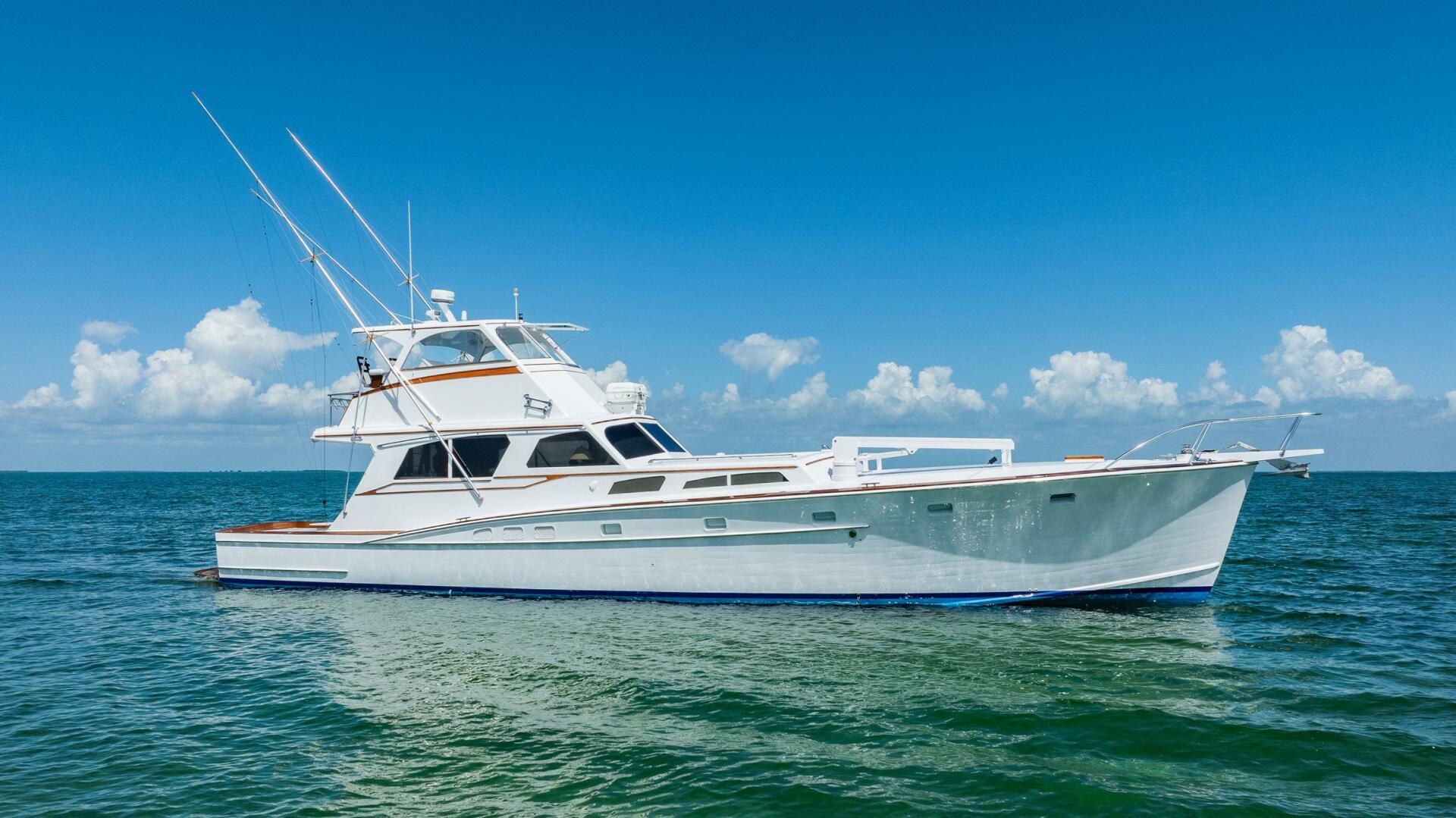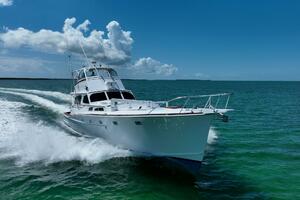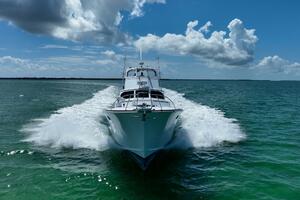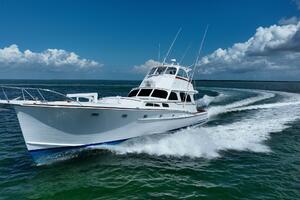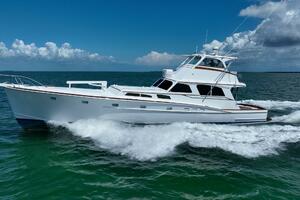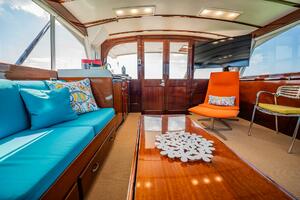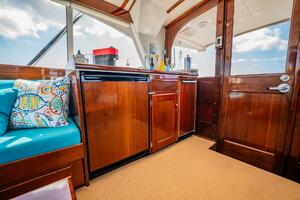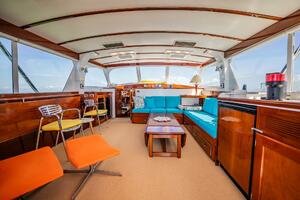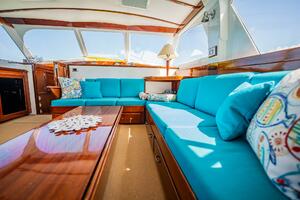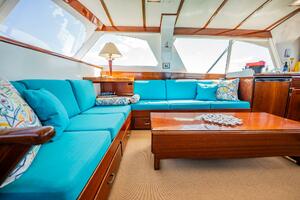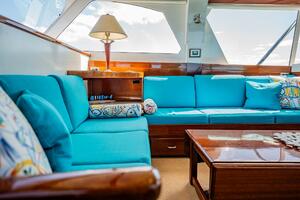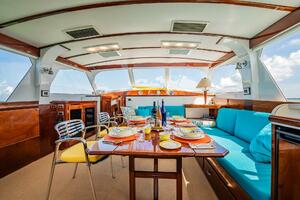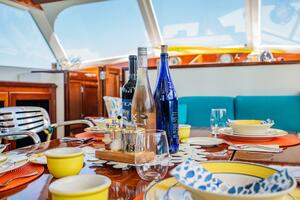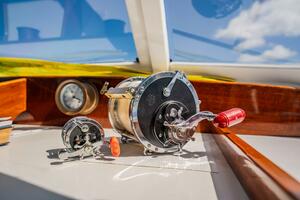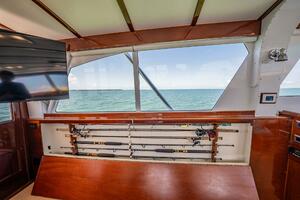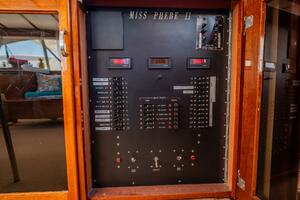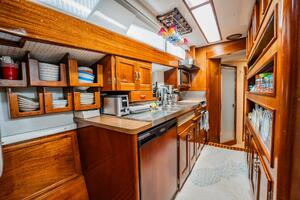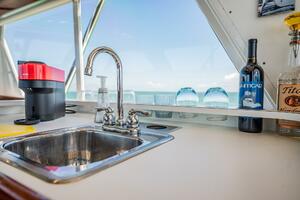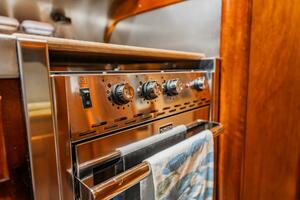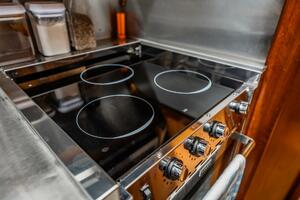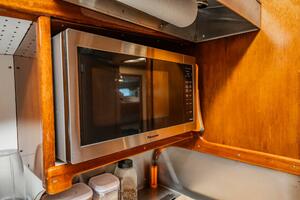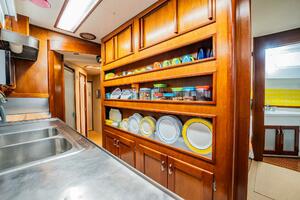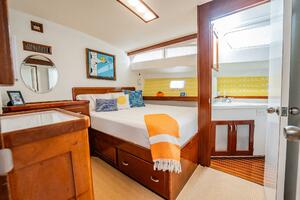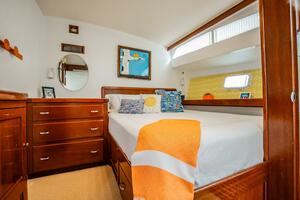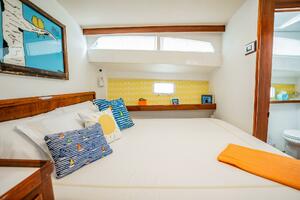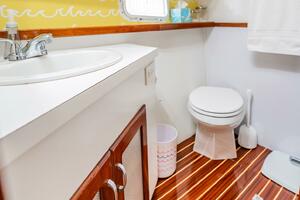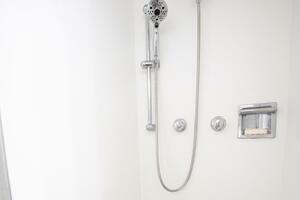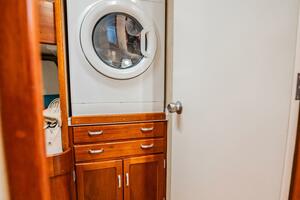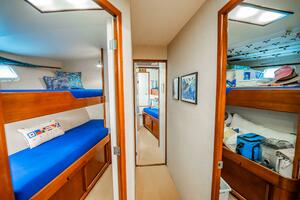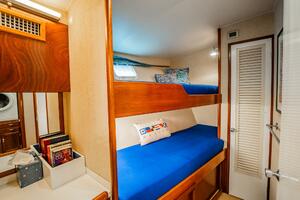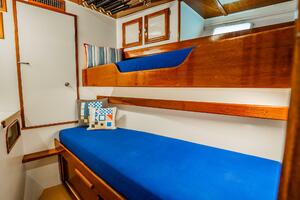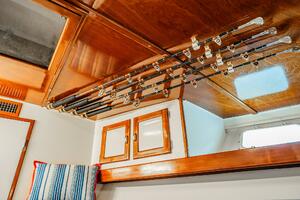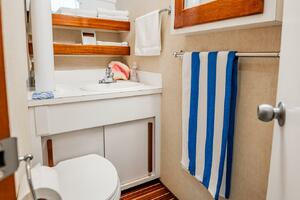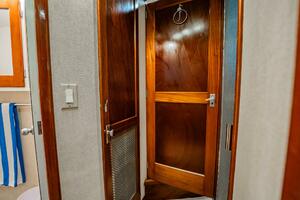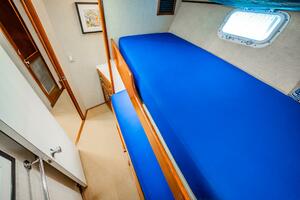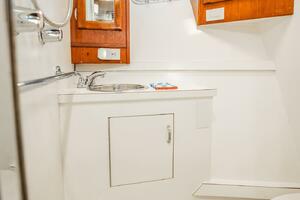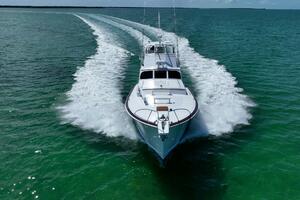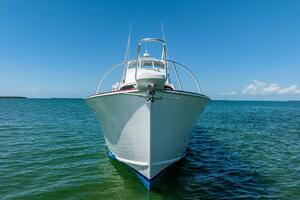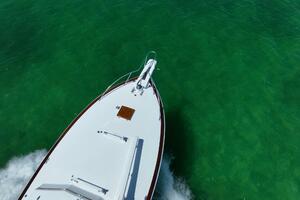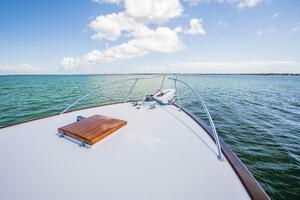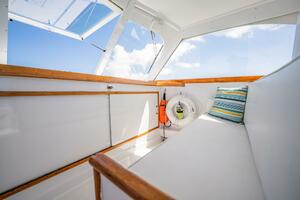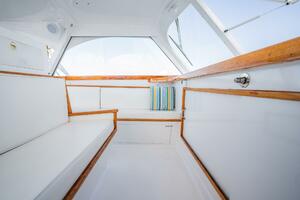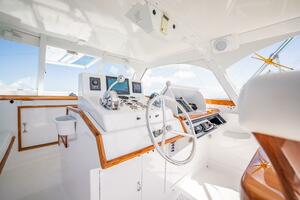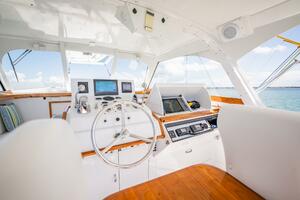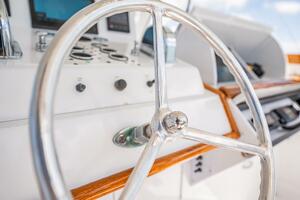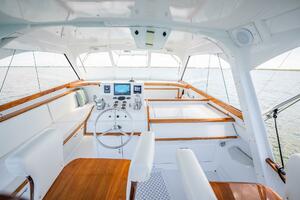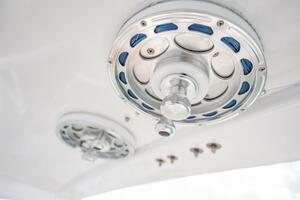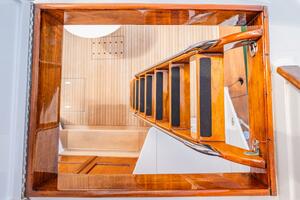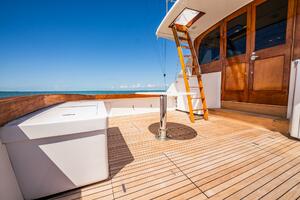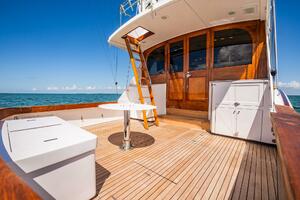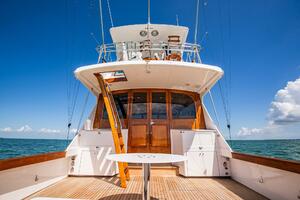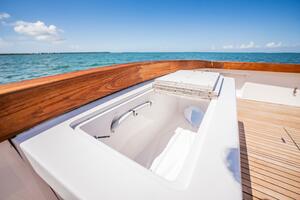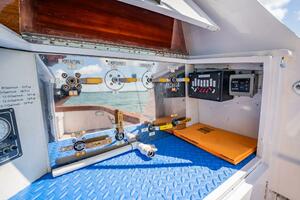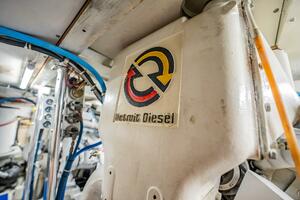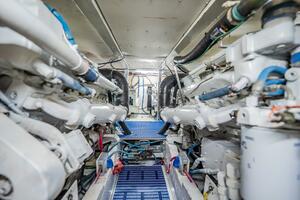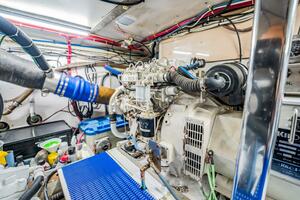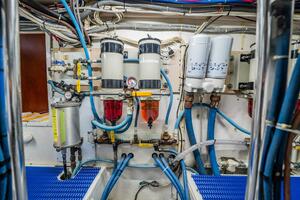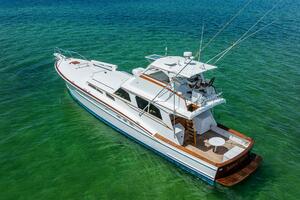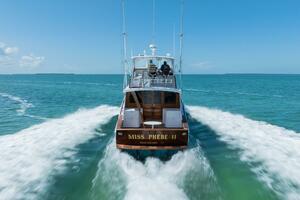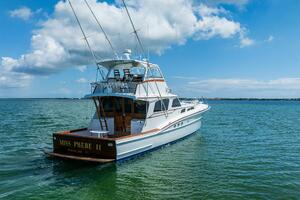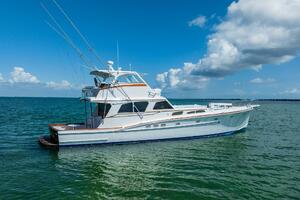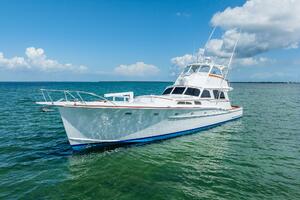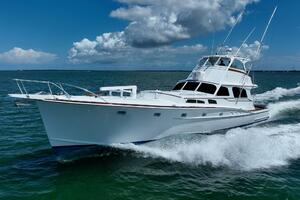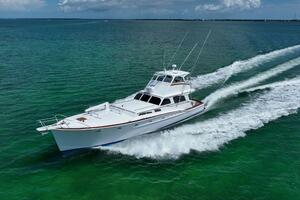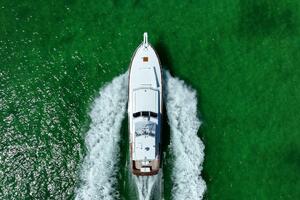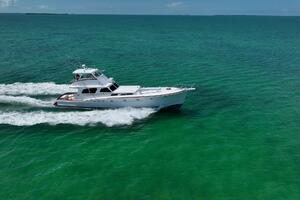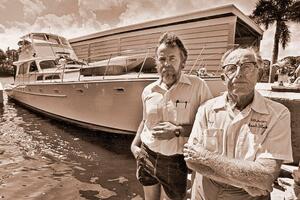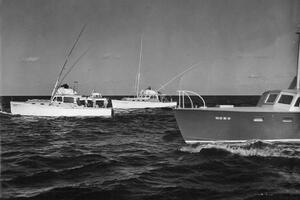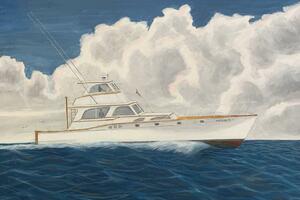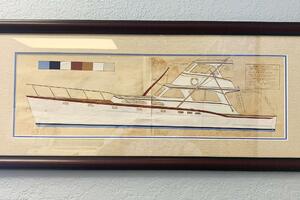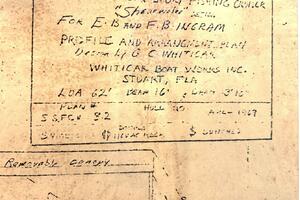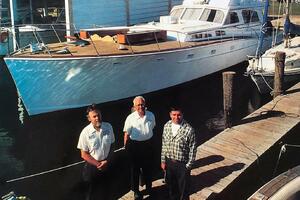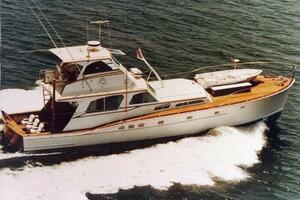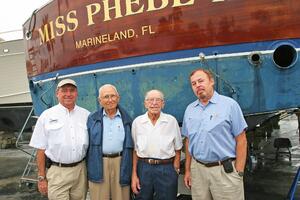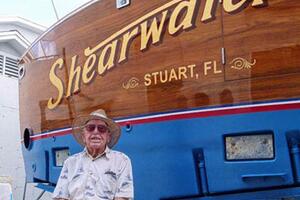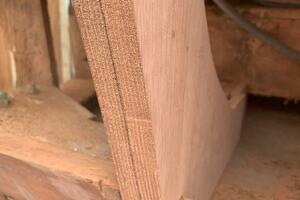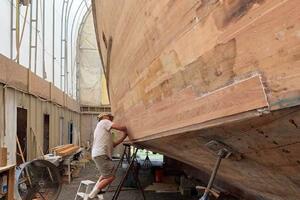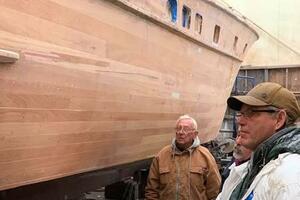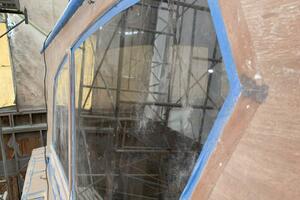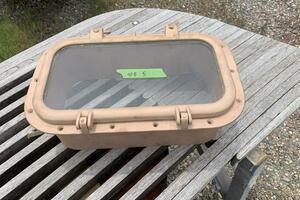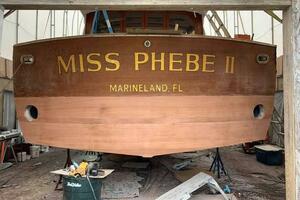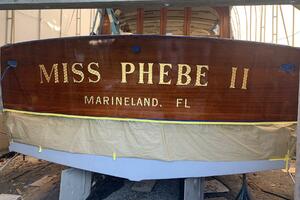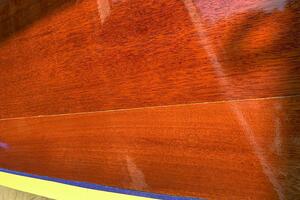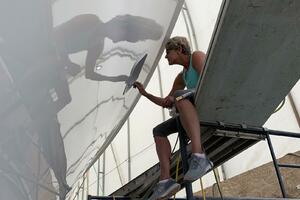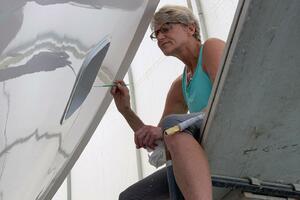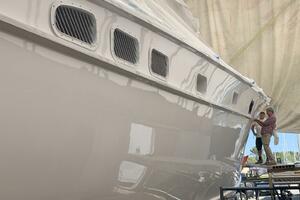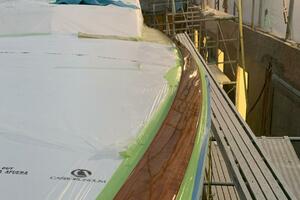MISS PHEBE II
Yacht for Sale
Length:
62′ 0″ / 18.90m
| Builder: Whiticar
| Year: 1971
MISS PHEBE II Yacht for Sale - 62 Whiticar
Contact Us For More Information
Detailed Information
Whiticar Boatworks History
Whiticar Boat Works was founded in 1947 by Curt Whiticar, though he had built his first boat in 1925. The family-run business, which grew from its original Stuart, Florida location, became known for building custom sportfishing yachts. Today, the company is operated by the second generation of the Whiticar family and has expanded to include multiple locations and services.
- Early years: Curt Whiticar, who moved to Stuart with his family in 1917, built his first boat in 1925, a 33-foot sportfishing boat named the Shearwater. This marked the beginning of his boat-building legacy.
- Foundation of the company: In 1947, the family officially established Whiticar Boat Works in Stuart, Florida. The business was incorporated in 1959 by Curt Whiticar and his brother-in-law, John Dragseth.
- Family succession: Ownership and management were passed down from the founders to their sons, John Whiticar and Jim Dragseth. The family has maintained a strong commitment to quality craftsmanship and customer service throughout the generations.
- Growth and expansion: The company has expanded its operations to include multiple locations in Stuart and Fort Pierce. It now includes several divisions, such as Whiticar Custom Boats and Whiticar Yacht Sales.
- Legacy: Curt Whiticar is recognized as a "dean of custom boat building" and is also known for his conservation efforts, co-founding the Stuart Sailfish Club. He retired from the business in 1986 at the age of 75.
Curt Whiticar’s History
The late Captain Curt Whiticar ranks as the “Dean of Custom Sportfish Boat Building.”
Few in history have lived to be 106 years old with a crystal clear memory, let alone being able to write about and illustrate memories from a century before. Curt Whiticar, the founder of Whiticar Boat Works, was one of the lucky ones. The patriarch of a family that has ruled the marine industry in Martin County, Whiticar died on March 7 of natural causes.
Born in 1911 during the Taft administration, his life spanned 19 presidents and two world wars. As a Martin County resident since 1917, he easily recalled in an interview with Indian River Magazine just before his death, the days when the Treasure Coast was a remote place that few had yet discovered. He remembered when the Lyric Theatre first opened in 1926 playing silent films; when Florida Gov. John Martin came to Stuart to celebrate the newly formed Martin County named for him; when area rum runners bootlegged in local waterways during Prohibition; and when the Indian River Lagoon ran a clear aqua blue, teeming with trout, snook and tarpon.
The Whiticar name is a powerhouse in the boating industry thanks to this multi-talented man who spent a lifetime creating sports fishing boats that are legendary in the boating world. Add to that he was renowned as a fisherman and charter captain. It’s no wonder that shortly before his passing he received the Legendary Captain and Crew Award from the International Game and Fish Association.
The accomplished man carried his zest for life into his retirement years. He was an extensive collector of antiques; he loved to play 18 holes of golf until he was well in his 90s. And he never gave up on his creative muse. He channeled his artistry into oil painting and produced more than 1,900 landscapes of places he loved.
A REEL FISH TALE
Curt’s journey to Florida all started with a fishing tale, except this one was for real. His father, Addison Whiticar, ran a charter fishing business on the Delaware Bay in New Jersey. During one of his fishing outings, a man told Captain Add about a place in Florida where he could catch 1,000 pounds of fish a day. The place was Stuart, and the man had been a guest at the Bay Tree Lodge in Sewalls Point. Add hated oystering and couldn’t wait to escape the cold, miserable winters, so in October 1917, he and his family moved to Stuart.
After his arrival, Captain Add purchased a used 23-foot squid boat with a one-cylinder engine for $500 from a man in Jensen Beach. The Phantom had a fish box that could hold 1,000 pounds of fish. Eager to test the waters, he began handline commercial fishing the ocean reefs. It was too good to be true. Amazed, he quickly loaded the box with Spanish mackerel and bluefish.
“My father had two spreader lines — they were like little outriggers — and they had a line attached to each one of those,” Curt recalled. “And then he had a straight line. He’d get into the fish out there, which were plentiful at that time, and they would start hauling. They shortened up the lines, so they were only maybe 15 feet behind the boat. As long as the lure was in the water, the fish would grab them, and they just kept busy.”
The fishing was so successful that Captain Add paid off the Phantom by the next month. He and his family began to spend winters in Stuart, where he continued handline fishing and then migrated to Fortescue, N.J. in the summers, where he charter fished. To Curt and his younger brothers, Jack and Johnson, boating and fishing was a way of life. Their wardrobe mainly consisted of four or five bathing suits each, and they ran around barefooted, just like Florida natives.
THE YOUNG ENTREPRENEUR
Determined, talented and ambitious, young Curt was never one to shy away from hard work. He was always looking for creative ways to make money.
Early on, he delivered newspapers and worked as a mate on his father’s boat. At 10 years old, he made a little workshop inside his family’s garage and taught himself how to build wooden fishing rods that he sold to his dad’s fishing clients. When he was 11, he decided to take a stab at painting signs on commercial boats and discovered that he was good at it. Soon the young boy had a side painting business with boat captains and owners.
BOAT BEGINNINGS
Curt’s passion for boating and fishing combined with his intense curiosity to understand how things worked led him to hang around boatyards, like Backus Boat Co. in Fort Pierce. By watching Todd Backus ply his skills, Curt learned how to construct a well-made boat.
When he turned 12, he decided to put that knowledge to work and asked his father if he could build a 16-foot flat-bottomed skiff.
“Dad was very cooperative,” he said. “First he asked, ‘Do you think you can do that?’ I said, ‘Yeah, I can do it!’ So I built this boat and we used it out in the river, just above the bridge, right down by the city dock.”
With his first boat a success, Curt became driven to create a bigger and better vessel. About a year or two later when he returned to Fortescue, he built a 20-foot, V-bottom, smooth-planked boat in his backyard from plans in a Motor Boating Magazine. With a 12-horsepower outboard engine attached, he was soon transporting passengers from charter boats to shore.
“When I got this boat, the captain would call on me,” Curt said. “I charged 50 cents or a dollar to take the parties in, and sometimes I got tips.”
BEGGING TO FISH
In those days, the Treasure Coast was becoming a hot spot for fishing. Wealthy northerners would vacation at the former Sunrise Inn, a luxury club in Stuart, which had scenic views of the St. Lucie River, inlet and ocean. Irving Bonbright, a New York stockbroker and founding member of the Sunrise Inn, lived to offshore fish. He frequented the Stuart wharf, where handline fishermen, like Addison Whiticar, unloaded their daily catch.
The two talked and struck up a friendship. Every season, Bonbright practically begged Captain Add to take him deep-sea fishing. He refused because there wasn’t enough room on his boat. After four years, persistence eventually paid off for Bonbright, and Curt’s father agreed to take him offshore.
“Dad allowed Bonbright to fish one rod and reel from the center of the boat, warning Bonbright that he would not enjoy the trip,” Curt wrote in his Whiticar Waterway Tales. “With Bonbright in the center of the stern, Dad could still handline fish the two spreader lines and sell all of the fish, plus Bonbright offered him a large amount of cash to have the privilege of fishing with Dad. Bonbright went, and even though he had to stand up all day and was covered with blood and slime, he had the time of his life.”
Their fishing expedition was such a hit that Bonbright financed a larger boat for Captain Add. It had a broader stern and room for two removable fishing chairs in the cockpit. The vessel, built by Todd Backus, was equipped so he could still commercial fish. The purchase of The Little Jack changed the course of the Whiticar family’s history.
“Dad started taking Bonbright out from the Sunrise Inn, and there were other guests there who wanted to do the same thing,” Curt said. “So usually when Bonbright left, other guests wanted to go fishing. That really got him into the charter fishing business. After that, he really didn’t do handline fishing.”
CHARTING A COURSE
For a time, it seemed as though Curt might not follow his father’s career path. He graduated from Bliss Electrical School with a degree in electrical engineering and in the early 1930s worked for Western Electric in New Jersey installing phones. But he felt like a fish out of water there, and it wasn’t long before the world of boating and fishing pulled him back to Florida.
By the mid 1930s, Curt and his two brothers followed their father into the charter fishing business and became known as the Whiticar Fleet. It was one of the largest operations north of the Palm Beaches. It operated from the family’s compound on Willoughby Creek, a short distance from the Sunrise Inn.
By the time Curt was 20, he had designed and built six boats by himself.
“I had been studying boat design on my own time,” he said. “I just picked it up instinctively — I know I didn’t have any lessons on it. From what I learned from books, I could figure out what would make for a good and comfortable sea boat.”
He had a mind for math and science, so he understood the natural laws that governed good boat design. He also had the artist’s touch, so he knew how to sketch attractive-looking vessels.
At that time, the Whiticar Fleet was made up of secondhand vessels. The young charter captain imagined having better sea boats that could handle the harsh conditions of the local inlet and meet their fishing needs.
“I knew what I wanted from experience,” he recalled. “When you start, you figure out how the boat is going to sit in the water, where the center of buoyancy, the center of balance — and all those features that are in the design.”
His brainstorming led him to create the Shearwater in 1937, named after a long-winged oceanic bird. It was a 33-foot, single screw boat with a V-bottom, rather than the more rounded hulls of the day. Its ability to slice through sharp waves and still handle the shallow inlet waters would become the signature of a Whiticar sports fishing boat.
The Shearwater was such a success that his father asked Curt to build the Gannett in 1939 — a 40-foot twin-screw boat — on similar lines as the Shearwater. With the help of Curt’s brother, Johnson, and marine mechanic Curt Schroeder, they built the vessel at a rented boathouse in Stuart. It became part of the Whiticar Fleet and was Captain Add’s pride and joy.
“I would say that the original Gannett was the real predecessor to the Whiticar boats,” John Whiticar, Curt’s son, said. “The original Whiticar boats were good fishing boats — they raised fish — they were good head sea boats — they were good going into a chop — they were shallow draft.”
CAPPING OFF THE WEDDING
During this time of boat-building and charter-fishing, Curt met Elsa Dragseth at a dance held at the Stuart recreation center. She arrived with another date, but Curt asked her to dance anyway. From that moment on, he decided not to let her get away. They married on April 14, 1939, in Curt’s home on Willoughby Creek. The couple planned to leave the wedding on the Shearwater. Knowing that his brothers would follow them, Curt had a plan — he dismantled the distribution caps on their boats so the newlyweds would have a good head start.
“Right after the wedding, we jumped into the boat and went down the creek to what is called North Lake,” he recalled with a chuckle. “It’s just a little entrance that turns, so you can’t see it from the main creek area. We heard them go by — one of them said, ‘I think he went that way,’ — the other said, ‘No, he went the other way.’ They never did find us.”
The couple were married for almost 70 years. Elsa passed away on March 23, 2009. They were blessed with three children: Laura Kay, Joanne and John.
HELPING THE WAR EFFORT
The Whiticar Fleet shut down during World War II because Curt and his brothers left to assist in the war effort. Brothers Jack and Johnson enlisted in the military and Curt worked at Fisher Boat Co. in Detroit making subchasers for the Navy.
Eventually the war ended and the Whiticar boys returned home. The family fleet was back in business.
The postwar years brought prosperity and lots of tourists who were in the mood to fish. Business was good for the fleet and Curt started making boats again. He didn’t have a boat shop yet, so his father gave him permission to build one on his property near Willoughby Creek. He found the materials for the structure when he heard that the Army was looking for someone to tear down the buildings at Camp Murphy, what is now Jonathan Dickinson State Park. With a $425 bid, he bought the 70-by-90 mess hall and dismantled it with hand tools, piece by piece, within the required 30 days. He later reassembled the building on Willoughby Creek and in 1947 Whiticar Boat Works was born.
The first boat that Curt made in the shop was the Hobo — a bright red vessel that was powered by a pair of 225-horsepower Chrysler engines and proved fast and exceptionally seaworthy. He made it for his brother, Jack. The boat maker soon made a name for himself among anglers and would build celebrated boats like Gannett II, Aphrodite, and Patsea V.
The Sea Lion — another legendary Whiticar boat — was owned by Robert Abplanalp of Precision Valve Corp. The 54-foot sports fisher graced the shores of Walker Cay in the Bahamas, where Abplanalp fished with his good friend President Richard Nixon. Jim Carey captained the vessel during that time and remembers how it had a tremendous impact on raising fish.
“I had won a number of tournaments with that boat because it would draw the fish up,” he said. “It went in the water very gently. It was an easy pushing boat because of its length to width characteristics. And with that it would create a really nice undisturbed wake behind it. When you put a set of baits down — a spread of lures — you could set them up and the fish would get drawn into the boat very close.”
Curt created more than 60 custom Whiticar boats until he retired at 75. Since then, his son, John, and his nephew Jim Dragseth have taken over the helm, running four divisions of the company on the Treasure Coast.
SAILING INTO THE SUNSET
During his retirement, Curt approached his pastimes with as much diligence and passion as he had for his career. He loved to paint with oils.
“I paint most of the time — every morning. Sometimes, two or three hours in the afternoon,” he said.
The prolific artist looked up to mentors Beanie Backus and Jim Hutchinson, who were inducted into the Florida Artist Hall of Fame, and who also inspired his work.
The centenarian never ran out of things to do. He owned an extensive collection of antiques, antique tools and cut glass — and carefully catalogued hundreds of pieces. He enjoyed golfing and played 18 holes at the Stuart Yacht and Country Club — twice a week — until he reached his mid-90s. And for old times’ sake, at 89, he built his last boat. It was a 16-foot, flat-bottomed skiff, a replica of his first boat. Steve Hero became the proud owner and named the boat Curtis.
So what was Curt’s secret to a long, healthy life?
“I still exercise. I have pulleys, rubber bands and I do sit ups. I walked until just recently,” he said the week before he died. “I never smoked, drank in moderation ...”
“And you have good genes and had a wife who treated you very well,” his daughter, Laura Kay, added.
When you reach 106 years, time is measured more in moments than in years. A sailfish jumping out of the ocean, a heron fishing for a meal or a sailboat gliding across azure waters — are all scenes that still need to be savored and captured. And so it is fitting that in Curt’s last days, he worked at his easel with paint-stained hands, busy portraying a brilliant sunset picture of the family boathouse on Willoughby Creek. He finished it in time. The painting was a gift for his son, John. It was just one more creation added to a lifetime filled with amazing works.
Curt Whiticar designed and built around 60 boats, but his favorite was his 33-foot Shearwater he built for himself in 1937. “We commercial-fished her with short riggers and used kites and longer bamboo riggers for sailfish. It wasn’t so complicated. … The fish were everywhere!”
Bibliography
- Indian River Magazine. “Curt Whiticar: A Century on the Water.” Indian River Magazine, interview conducted shortly before Curt Whiticar’s passing.
- Whiticar Boat Works. “History of Whiticar Boat Works.” Company historical overview.
Vessel Ownership History
Owner # 3 Current Owners Refit Story and Work Done
2018-Present
Miss Phebe II was purchased in August 2018 in St Augustine, FL and transported to Deltaville, VA for a full refit from 2018 to 2020. Upgrades included hull glassing, new paint, custom stateroom work, enhanced lighting, wiring, AC units, and refinished teak. After returning to the water in 2021, the owners lived aboard for three years before deciding to move on. During the refit, all structural and cosmetic issues were addressed.
Talking to the Present Owner
“When I first laid eyes on this boat and decided to buy her, every instinct told me to walk away. She was fifty years old and needed, well... everything. But after learning about her history, pedigree, and hearing stories from the Whiticars, I realized how daunting this project truly was—yet I felt compelled to see it through and do it properly.”
*We assembled a talented team of craftsmen and shipwrights who introduced me to the classic, nearly forgotten art of yacht building. I was fortunate enough to spend every day working alongside my wife and some of the finest shipwrights, carpenters, painters, artists, and technicians, all equally passionate about restoring her.”
Owner #2 Previous Owner
1992-2018
The vessel's previous owner was an active conservationist who dedicated significant time on board to supporting marine research initiatives. She is a participating member of the SeaKeepers DISCOVERY fleet, contributing to projects such as tiger shark tagging in the Bahamas, studies of marine algae and coral, whale shark research, dolphin research, among others. Esteemed organizations including the Cousteau Society, Mote Marine Laboratory, and the Rosenstiel School of Marine and Atmospheric Science at the University of Miami have conducted their work aboard this vessel.
In 2012, Miss Phebe served as the platform for the inaugural SeaKeeper’s DISCOVERY Yachts mission during a research cruise to the Dry Tortugas. This expedition enabled scientists to collect hundreds of coral tissue samples for genetic analysis, advancing understanding of coral community variations.
Additionally, the vessel possesses a robust fishing history, having traveled to Belize and other notable destinations.
During a fishing tournament in the Turks & Caicos in the 1990s, Marlin Magazine’s Ricard Gibson documented an incident where a large blue marlin collided with the starboard side below the gunwale, leaving its spike embedded in the mahogany. The spike remains visible from within the engine room to this day.
Owner #1 Original Owner
1971-1992
E. Bronson Ingram II, a billionaire and investor, commissioned his new boat from Whiticar Boat Works, which took 2.5 years to build. Designed and built by Curt Whiticar, this Shearwater custom sport fishing boat has been featured in magazines for its distinguished lineage, beauty, and performance.
Vessel Walkthrough and Options
Accommodation
Miss Phebe II is a 4/3 Layout. Entering the Cockpit, an L-shaped settee and mahogany table are to starboard, with two chairs and another table to port. Down a few steps, the galley is to port and the master stateroom—with side queen berth and en suite head/shower—is to starboard. Forward of the galley, the second stateroom (starboard) and third stateroom (port) both have upper and lower bunks, with a separate head and shower stall opposite each other. The bow features crew quarters with bunks, a head, and a shower. On the bridge, there are two new Bluewater helm chairs, bench seating on the port side, and another bench forward of the console.
Electronics
- Garmin 943 XSV with Garmin B75C Medium Chirp transducer (new 2023)
- Garmin GPS Map 4212 with Airmar Smart Depth transducer
- Garmin Fusion Stereo (new 2021)
- Garmin Auto Pilot (new 2021)
- Garmin NMEA 2000 Network
- Starlink High Performance Satellite dish and router installed (2023)
- New VHF radio and antennas
Galley
- Panasonic 1100W microwave
- Force 10 3- burner 240 V electric range, new 2021
- Summit AccuCold 10.1 cubic foot refrigerator, new 2021
- U-Line 5.4 cubic foot under-counter freezer
- U-Line 5.4 cubic foot under-counter refrigerator
- Scotsman under-counter icemaker, new 2022
- Stainless steel countertop
- Double S/S sinks
- Storage below the countertop
- Spice rack on starboard side with storage above and below
- Glass holders above the countertop
- Mahogany & Holly Flooring
Electrical/Mechanical
- 50 AMP shore power port and starboard
- Eight, Precision 8V-170 A 20hr batteries (four per 32V Main engine starting bank) new 2021
- Two, West Marine 8D AGM 12V batteries (one per 12V Generator starting bank) new 2021
- Sterling power 32V-20a Battery charger, new 2021
- ProNautic 12 40p 12V battery charger, new 2021
- 2-27 KW Kilo-Pack Generators (new in 2000), Port with approx 1840hrs and Starboard with 1920hrs total time. Both generators have 350 350hrs since being rewound in 2018.
- Splendide washer and dryer (vented), new 2021
- Headhunter Royal Flush electric heads (3X)
- Headhunter Type II Marine Sanitation Device (MSD)
- 90 Gallon black water tank
- New windshield wiper motors
- New helm gauges
- New engine room blowers
- New engine room lights
- New security cameras
- New Cockpit and helm overhead lighting
- New underwater lighting
- All new bilge pumps
- New Racor rack and gauges
- New running and anchor lights
- New ACR search light and a new spreader light
- Installation of new HVAC system, including seven Turbo DTG self-contained Dometic units each with sound covers and Smart Start modules (two-16000 Btu and five-6000 Btu units), new plumbing, sea strainers, circulating pumps (two loops), wiring and thermostats
- New Bennett hydraulic trim tabs
- Installation of a new Fireboy(MA-43 lbs single cylinder) fixed fire suppression system, including new blower and engine shutdown modules
- Water maker removed and rebuilt, including new valve controller, power unit, high-pressure pump, hoses, membranes and filter canisters
- New Glendenning electronic synchronizer installed
- Emergency main engine shut-off cables installed at the helm
- Propellers removed and tuned
- Horn and accessory air compressor replaced
- Type II MSD pump, aerator, chlorine dosing pump, auto level sensor, monitor, vent lines and thru-hull sea cock replaced
- Installation of new freshwater plumbing throughout, including new freshwater lines, faucets, mixers, Mach 5 pumps, water heater, drain lines, sump pumps, and drainage thru hull fittings
- New steering ram and hydraulic lines installed
- Tank Tender tank monitoring system
- SeaFlow dry bilge system (seven pick up station)
Deck/Hull
- Removed and replaced all sea cocks and thru hull fittings
- Removed of the rudders and rudder shafts, repacking of the rudder glands, replacement of the rudder shelf and thru hull sleeves
- Removal and calibration of shafts, installation of dripless shaft seals, and new cutlass bearings
- Davit removed and rebuilt, including new hydraulic rams, stainless steel hydraulic lines, lifting cables, hydraulic motor and installation of a wireless remote control
- All hull fasteners replaced (silicone bronze)
- Bottom and running gear painted 2025
- Hull waxed 2025
- Teak cockpit
- Teak covering boards
- Mahogany transom
- Mahogany Bulkhead in cockpit
- Teak toe rail
- Teak swim platform
- ACR EPIRB (battery replacement date 05/2031
- Revere Offshore Commander 8 person life raft (next inspection date 12/01/2026)
- Full cockpit canvas cover
- Cockpit awning canvas cover with polished stainless braces
- Canvas cover for helm chairs
Fishing Equipment
- Live well with new live well pump, thru hull and sea cock.
- RUPP 34, Viking Special outriggers and center rigger
- Fish box
- New Frigibar fish box icemaker (2023)
- Cockpit freezer
- (6) rod holders in gunnels
- (10) rod holders on the bridge
- Rod storage in Crews Quarters & salon
- Dock box (7' low profile)
Broker's Notes
*If you're considering purchasing this yacht, please understand— the owner selling this yacht isn’t thinking much about the money side of it. The asking price is so much less than what the current owner has invested. His main concern is where she will end up next; he won’t sell unless the new owner has a clear plan to maintain her to the very highest standards."
“It’s beyond money now. This is the result of years of love, passion, and my soul poured into something that should endure for generations to come.”
*“She’s like having a daughter.”
Exclusions
Personal property of Scott Carter and Mary Hartwell is excluded since all of the personality on the boat is ours. The orange salon chair and ottoman, as well as the fishing rods, reels.
Mechanical Disclaimer
Engine and generator hours are as of the date of the original listing and are a representation of what the listing broker is told by the owner and/or actual reading of the engine hour meters. The broker cannot guarantee the true hours. It is the responsibility of the purchaser and/or his agent to verify engine hours, warranties implied or otherwise and major overhauls as well as all other representations noted on the listing brochure.
Disclaimer
The company offers the details of this vessel in good faith but cannot guarantee or warrant the accuracy of this information nor warrant the condition of the vessel. A buyer should instruct his agents, or his surveyors, to investigate such details as the buyer desires validated. This vessel is offered subject to prior sale, price change or withdrawal without notice.
